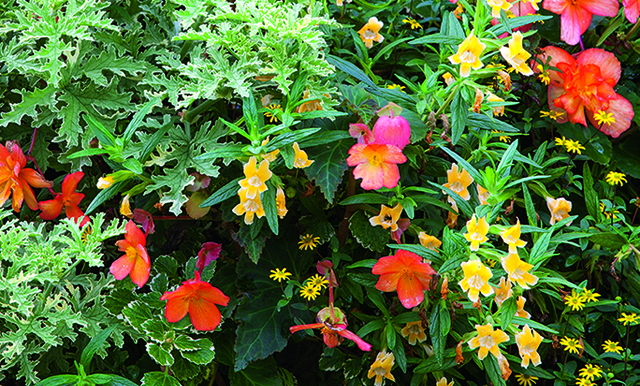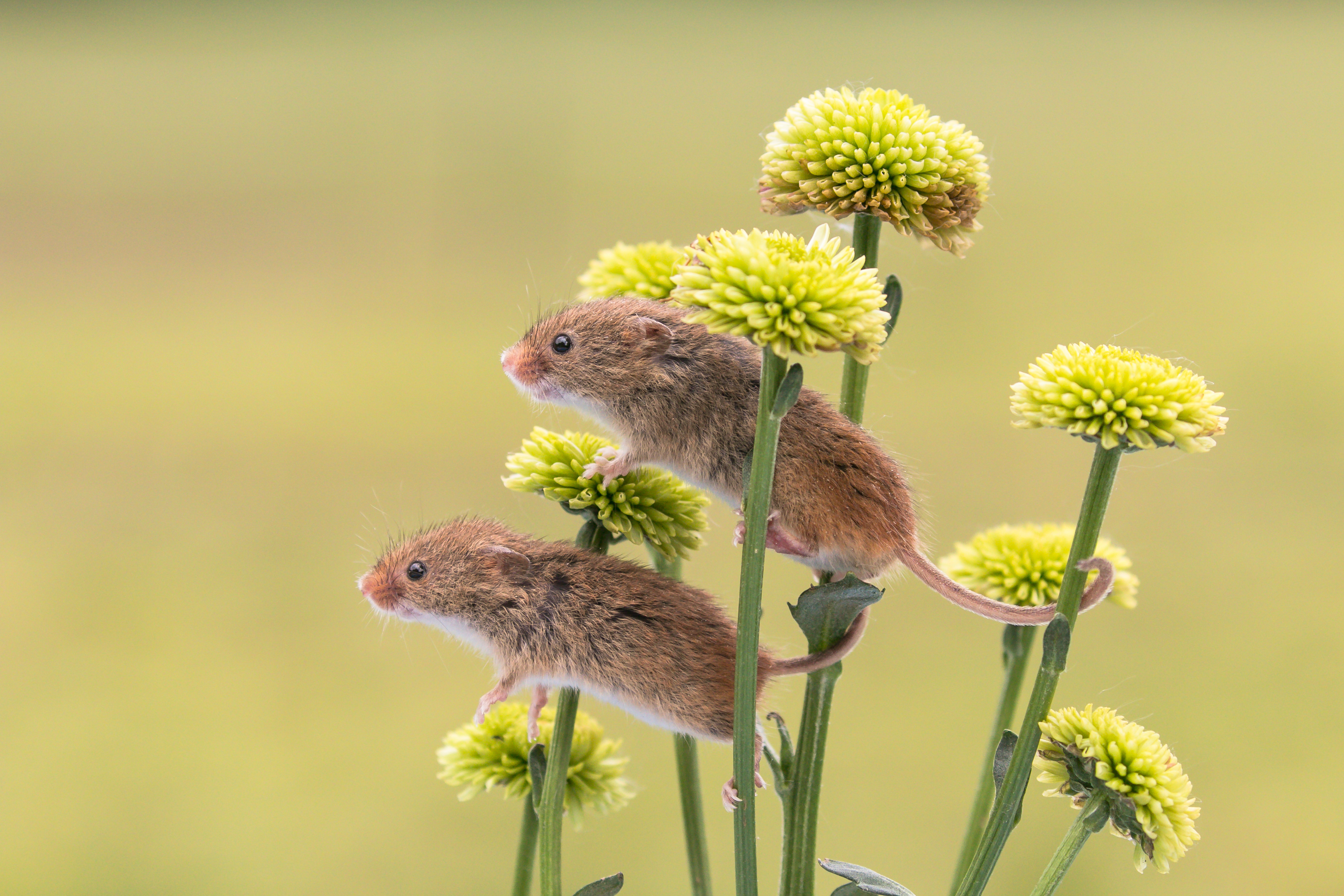The Potted Display at Bourton House, Gloucestershire
Take a tour around the annual display of clay pots at Bourton House in Gloucestershire


Visitors to Bourton House garden are often amazed at the array of pots and containers that they see around the garden. The main display is arranged around the glasshouse and potting-shed area and takes in a large, wooden, raised bed which had, at one time, been used for alpines, although perhaps not very successfully.
The present potwork displays happen each year rather by accident than design. We grow a lot of half-hardy plants, those that are tender to frost, which are used through the summer season in the main borders of the garden. They range from simple marguerites to spiky and exotic looking Aeoniums and Agaves, with a whole range of other things in between. We always propagate and grow on more than our borders need (largely as an insurance policy against the vagaries of the weather), hence the potted displays could be said to be, to some extent, created from the ‘leftovers’.
But perhaps that’s doing them an injustice, as the ‘leftovers’, when planted into their own pots and stood beside others of their kind, have an importance and presence in their own right. Nevertheless, because the plants are growing in containers of various sorts, their needs are greater than those that are growing in the borders. There are, therefore, some major considerations we factor in to achieve successful displays and the following approach has served us well at Bourton House for many years.
We use soil-based (John Innes-type) composts, as they readily re-wet if they should become dry; they’re often mixed with other, soil-less brands to improve or leaven the texture. As the plants have to stand from the beginning of June until the end of October, they need to be able to grow on without becoming pot-bound too early in the season (although they will be by the end of it). Therefore, they’re potted on periodically, into clay pots as much as possible, particularly for the subjects that will be seen at the front of the display. However, clays dry out much more quickly than their plastic counterparts, which leads me on to the key subject of watering.
After potting on, the plants are watered thoroughly immediately, then, subsequently, only when they need it, although care needs to be taken not to overwater succulents, whose water requirements are very limited. And, of course, it’s wrong to assume that, during a rainy spell, the pots won’t need watering, as foliage can shrug off water away from the compost and the contents remain dry.
Potted displays also require feeding as the original compost only contains sufficient nutrients for the initial few weeks, so we top-dress with a pelleted, slow-release fertiliser that will continue to feed out nutrients until the end of the season. Last, but not least, is the exciting part, the displaying of the plants.
We don’t have a plan, but we do know the effect we want to achieve. When placing the plants, we mix the tender species such as Abutilon and Tibouchina—with the succulents, paying attention to shape, form, texture and heights, moving them around until we get a pleasing result. Most of them are placed very close together so that, very quickly, the actual pots won’t be seen beneath the wealth of flowers and foliage.
Exquisite houses, the beauty of Nature, and how to get the most from your life, straight to your inbox.
Bourton House Garden, Bourton-on-the-Hill, Gloucestershire (01386 700754; www.bourtonhouse.com). The garden is open April (but not Easter) to October, Wednesday, Thursday and Friday, 10am–5pm.
* This article was first published in Country Life magazine on July 23 2014
These images are the from the Country Life Picture Library and link it to www.countrylifeimages.co.uk.
-
 The pink granite chateau that the Cointreau family built in the Loire Valley is for sale at £3.5 million
The pink granite chateau that the Cointreau family built in the Loire Valley is for sale at £3.5 millionThe great country seats of the Guinness family have an equivalent over the Channel, where the chateau built by the Cointreau family is on the market.
-
 Quiz ahoy! Even these gorgeous mice have been waiting for the Country Life Quiz of the Day, November 21, 2025
Quiz ahoy! Even these gorgeous mice have been waiting for the Country Life Quiz of the Day, November 21, 2025From school reports in South America, it's all in today's Country Life quiz.
